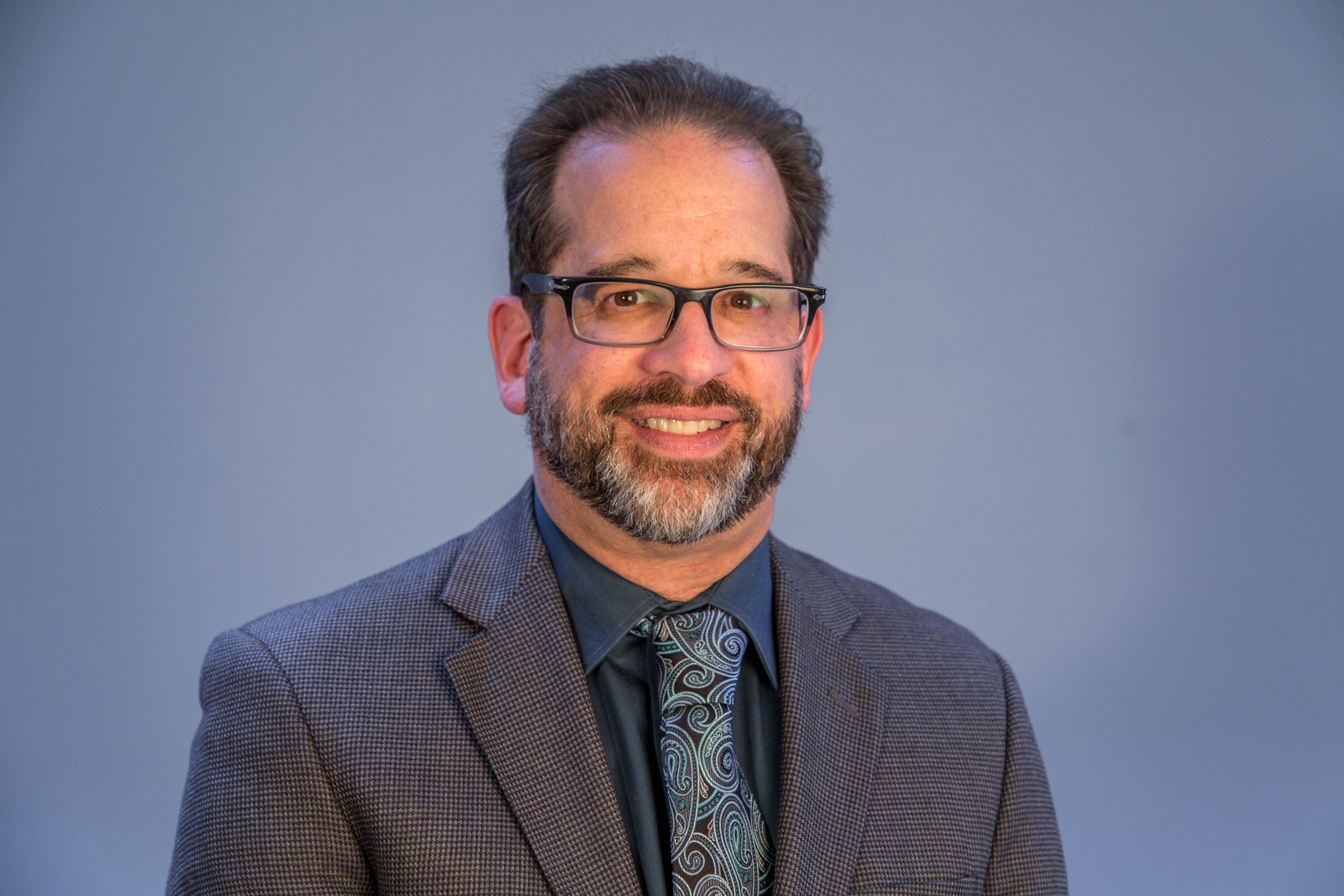You have /5 articles left.
Sign up for a free account or log in.

Getty Images
Last Wednesday, “Inside Digital Learning” published an opinion piece from a professor who declared that he has no interest in teaching online, despite many colleagues’ attempts to convince him otherwise. The piece generated quite a bit of social media chatter, some of it critical of the author’s viewpoint. But he isn’t alone -- every institution has a subset of instructors who feel like they’re not interested in or capable of using digital tools to change how they teach.
We consulted some online learning leaders and experts about the most productive ways to respond to sentiments like the one in that piece. Here's what we asked:
- What percentage of faculty members do you believe hold views similar to this professor?
- Should institutional leaders try to change the minds of faculty members who are firmly opposed to digital forms of learning, or is it OK to leave a certain proportion of the faculty teaching in a more traditional format if they choose?
- What do you do on your campus (or what can be done on campuses more generally) to convince skeptical faculty members that teaching online is both possible and practical -- and how successful has it been?
Here's what they said.
 Kelvin Bentley, digital learning consultant
Kelvin Bentley, digital learning consultant
Unless tenure and promotion criteria reinforce the need for faculty to engage in innovative teaching strategies that leverage evolving pedagogical models and educational technologies, we should not expect all faculty to engage in such pursuits. Given that many institutions offer online courses and programs and research suggests that higher education enrollment growth is more in online courses, one would think that majority of faculty support digital learning initiatives. If an institution has the right number of faculty willing to offer online courses each semester, those faculty who are not interested in embracing digital teaching options can stay under the radar, especially if an institution has many ways in which a faculty member can achieve tenure and/or promotion or if there are enough nontenured lecturers and/or adjunct instructors to meet the online learning needs of students.
If an institution is truly interested in increasing the number of its faculty who engage in digital learning practices, there are different strategies to consider. Incentivizing the behaviors you want faculty to exhibit is crucial. Such incentives could include release time, financial support to attend conferences on digital learning practices and stipends to redesign and redevelop certain courses so they align with good practices in digital learning instruction. Proactive professional development strategies will give faculty the knowledge and skills they will need to embrace innovative digital teaching strategies that make the most sense for them given their particular discipline. This work will require an institution’s academic leadership to collaborate with and empower instructional designers, instructional technologists, assessment specialists, librarians and accessibility experts to engage with deans and department chairs to develop ways to conduct workshops and one-on-one sessions on digital learning [with] faculty whenever possible. In addition, such professional development efforts will be enhanced when faculty engaging in such work can also be highlighted during college and department meetings and given opportunities to serve as mentors to their fellow faculty members.
Another strategy is to find ways to link the adoption and use of innovative teaching strategies in ways that benefit students. Such efforts are important because doubting faculty need opportunities to see innovative practices as more than just fads or the newest “shiny objects” their institution is pursuing. When data can be shared that support that the adoption of a new teaching practice actually improves student satisfaction and success, it helps resistant faculty challenge their previous notions about innovation and will hopefully help them understand evolving their approaches to teaching is indeed worth our attention and effort given such work benefits their students.
 Malcolm Brown, director, Educause Learning Initiative
Malcolm Brown, director, Educause Learning Initiative
Neither the online nor face-to-face modes, by themselves, guarantee success in teaching. Nor should anyone be pressured or coerced into teaching online, teaching strictly face-to-face or using a certain technology. Neither the online nor face-to-face modes, by themselves, guarantee success in teaching. If anything, rewards and promotion should be offered to those doing good teaching, teaching that demonstrably and consistently enables learners to achieve their goals. The question of mode seems secondary, at best, to that.
Hampering this discussion is the fact that the term “online” is very ambiguous. Does it mean “completely,” “mostly” or “somewhat” online? Some of the discussion’s participants seem to be using it to mean courses conducted entirely online, with the face-to-face courses being its opposite. The danger for the discussion is getting stuck in simplistic oppositions that are largely imaginary. The reality is that things are hardly so black-and-white. What course in higher education these days doesn’t have some degree of online componentry, even if it is just straightforward use of the LMS? Given the widespread use of blended and flipped course models, I’d venture to guess extremely few, if any.
Recent research can help us to appreciate the complexities associated with online and face-to-face learning. According to the Educause 2017 student and faculty surveys, the online horse is already out of the gate. According to the survey results, student on average took 3.7 courses with at least some online components and faculty taught an average of 3.2 sections, again with some online components. In terms of preferences, students and faculty agree: 79 percent of students and 71 percent of faculty prefer a blended course model. The way these two populations differ is with respect to efficacy: 77 percent of students feel that a hybrid environment is most effective, whereas faculty are more skeptical -- 45 percent do not agree that online learning is effective.
But it’s not just a matter of preferences. On page 21 of the Educause 2017 student study we find this: “Blended learning as a modality of instruction and learning is superior to either fully online or fully face-to-face. Indeed, new research supports this, especially when the technology serves as a catalyst for changing both what faculty teach and how they teach.”
These research results indicate that nobody is served by online versus face-to-face debates. The situation is far more complex and subtle than that, and the opportunities much richer. There is a case to be made for face-to-face engagements in the curriculum, but there is also case for online engagements. Successful teaching and learning requires the orchestration of a variety of components, and the blend of the components varies with discipline, subject matter, learner audience and resources at hand. In the end, I think it behooves us to be wary of online versus face-to-face conversations and instead to continue to explore the curricular territory with an eye to successful learning by utilizing the learning environments that best serve that purpose.
 Benjamin B. Bederson, associate provost of learning initiatives, University of Maryland at College Park
Benjamin B. Bederson, associate provost of learning initiatives, University of Maryland at College Park
Diversity of perspective and experience is one of the things I cherish most about university life. I love that our faculty bring their own ideas, expertise and desires to the classroom -- even though I sometimes wish that they were more aligned with my own. Of course, this is no different than any other aspect of life. As much as I pretend that I would love it if faculty would just do things my way, the reality is that would be a boring university to work in. So I have come to embrace the challenge of meeting faculty where they are and try to find compelling arguments to help them want to seek new ways of engaging with their students.
I don’t see the issue of encouraging faculty to teach online as being much different than teaching in active learning classrooms, focusing on a comprehensive assessment strategy, designing their course starting with learning outcomes or understanding the importance of building an inclusive classroom climate.
Our Teaching and Learning Transformation Center’s mission is to engage faculty in teaching practices that are effective for students in ways that are equitable and efficient. We will never force one particular approach on faculty -- but we will challenge faculty with the evidence about what we know works for student learning. We set high expectations, offer strong support and help faculty tell a story in their required teaching portfolios about their development of effective teaching practices, and what they have learned and changed over time.
Our efforts around online teaching follow the same approaches we have taken to encourage evidence-based teaching practices. All changes in teaching (including moving online) are a kind of institutional culture change, and need similar approaches. From a campus perspective, we work hard on looking at our reach -- how many faculty are responding to our outreach efforts -- whether it is workshops, faculty learning communities, fellowship programs or engagement with our self-service “how do I” web pages.
So, just as we aim for 100 percent of faculty to engage with our center to develop their expertise in teaching, we hope that 100 percent of faculty that teach in fully online courses will engage with us in how they teach online. But I think that the approach needs to be organic. Start with the early adopters, develop relationships with individual faculty, department chairs and deans that are excited about teaching online. Help them be successful and encourage them to be ambassadors across campus.
I do not see a need for any specific percentage of faculty to teach online, because I think it is a dynamic process that combines personal interest, market need and business strategy. But I do think that as we move online, those that participate need to take it seriously, study it and become expert teachers -- just as I would expect them to become experts in other aspects of their professional lives. And any choices to not teach online should be fully informed, and not be based on uninformed assumptions.

It’s tough to put a number out there for the percentage of faculty that hold the same view as Dr. Schaberg; it will vary from school to school and discipline to discipline. Whatever that percentage is, I imagine it is decreasing year after year. I understand Dr. Schaberg’s viewpoint, and I felt that way before I tried teaching online. Now, over a decade later, I’ve found ways to engage with my students on a highly collaborative and interactive level. Today, I feel closer to my online students than I do my traditional. Nothing will replace the traditional experience, but the virtual opens other opportunities that just are not possible in the traditional setting. In the virtual classroom I can engage with students from around the globe, integrating a much richer learning experience for everyone.
The digital revolution is upon us. Faculty will have to tool up to keep up with the new generation that demands digital delivery. Right now, the market is traditionally the nontraditional student, the working professional, which is more responsible and can handle self-directed learning. But that market is shifting to a younger crowd and we must be prepared. Delivering content is one piece of the puzzle but going fully online is much more challenging. Faculty are not trained to be online teachers; it’s up to the leaders in the online space to provide training and support for the faculty. It’s not the faculty’s job to troubleshoot technical issues, or know the best way to convert, stream and throttle bandwidth when delivering their lecture videos, or know the best way to integrate antiplagiarism tools. Faculty need to be supported through this digital transformation and supported at a high level.
Here at Temple University’s Fox School of Business, we built a robust Online and Digital Learning Team that supports all our online and hybrid initiatives, a homegrown approach to supporting our digital efforts. The team is comprised of instructional designers, instructional technologists, technical support staff, video production staff and web-development staff. We aren’t here to persuade the skeptical faculty, but to support those willing to teach online. The team’s greatest accomplishment has been to take that non-tech-savvy professor that wants to keep up with the times but just doesn’t know how to get started. We hold the hands of the faculty, teaching them to crawl, then walk on their own, and eventually run.
Teaching online isn’t for everyone. Those that are skeptical will most likely remain skeptical if they don’t know or experience what it’s like to be engaged in a collaborative learning environment infused with robust user-friendly technologies. If they have experienced that type of learning environment and remain skeptical, then it’s just not their thing.
Paul Krause, CEO, eCornell
Not everyone has been exposed to truly effective online learning experiences. Many times faculty start with the assumption that all online courses are created equal. They may have seen a wide range of programs -- including some that are not so good. Or they may assume that all online programs are self-paced and have stripped out interaction with an instructor. Once faculty actually dive into a high-quality online course experience, 98 percent of the time, they love it. That type of quality requires great instructional design support for faculty and facilitated discussions between instructors and peers that can be deeper and more engaging. Having delivered online learning solutions for 18 years at eCornell, we’ve found that the benefits of the experience also don’t have to end after the course finishes. Students often not only build a portfolio of in-demand skills that they can continue to use in the workplace but a lifelong network of relationships that can serve them for their entire careers.
Leaders should strive to expose faculty to examples of high-quality online instruction and related research on learning effectiveness. However, I would always prioritize working with faculty that are open-minded and willing to learn to get to the best results for students and the institution.
Skepticism is normal and the best way to change minds is to expose faculty to high-quality courses that demonstrate how well most on-campus topics can be translated into great online experiences.
 Shannon Riggs, executive director of course development and learning innovation, Oregon State University Ecampus
Shannon Riggs, executive director of course development and learning innovation, Oregon State University Ecampus
According to the 2016 Babson survey, nearly one-third of academic leaders believe online education to be inferior to traditional classroom instruction, and two-thirds of chief academic officers reported that their faculties do not perceive online education as legitimate. That same survey, though, shows that academic officers at institutions with larger online enrollments held significantly more favorable views.
It is natural for faculty to be more skeptical of teaching methods and environments they do not yet have experience with, and it is also natural for acceptance to grow as experience is gained. The level of faculty development, training and support available for those teaching online also has a direct impact on faculty readiness, and therefore acceptance of online teaching and learning. I have worked for Oregon State Ecampus for almost seven years, and acceptance amongst our faculty has grown even in that short time. In fact, after [we work] with faculty to develop an online course, they often tell us that their work with Ecampus has had a positive impact on their face-to-face teaching.
Whether leaders should try to change faculty perceptions about online education depends on the institution’s strategic goals, mission and the students it is trying to serve. Oregon State University is a large public land-grant institution, so part of our mission is to increase access to education. Providing courses and degrees online is one way we fulfill our mission. That said, any faculty member can benefit from learning more about effective strategies for teaching online, even those who teach only on campus. Students today expect information and interaction online, whether they are taking fully online, hybrid or face-to-face courses. Students appreciate easy access to digital learning materials, convenient access to grades and feedback on their work, and the opportunity to communicate with classmates and instructors at times and using technologies that are natural and convenient for them.
At Oregon State Ecampus, our approach to providing high-quality online courses is to prepare and support faculty well. Providing comprehensive training and faculty development programs, instructional design services, multimedia development, and course development funding has proven effective for our faculty. One of our greatest pleasures is when a faculty member begins as a staunch skeptic and later becomes a champion for online education.
To help skeptical faculty members learn more about the efficacy of online teaching, the Oregon State Ecampus Research Unit recently created an Online Learning Efficacy Research Database, where faculty can search academic studies on the learning outcomes of online courses in comparison to other modalities.
Finally, we should also consider how skepticism about online teaching affects faculty who are teaching online, especially if that skepticism means their teaching is not respected, supported or recognized. My forthcoming book, Thrive Online: A New Approach for College Educators, seeks to shift the conversation about online education. The time for asking if online education works is past. Instead, we should be talking about how to help faculty feel as natural and fluent online as they do elsewhere, and how to adapt our teaching strategies to the user-centered, learner-centered nature of online spaces.
 Joseph Scuralli, dean of online, Berkeley College
Joseph Scuralli, dean of online, Berkeley College
Digital forms of learning are not an all-or-nothing proposition. While approximately one-third of faculty members I come across hold views similar to [Christopher Schaberg], many faculty members choose to teach in a variety of modalities including blended, hybrid, online and on-site courses.
Faculty can have the best of both worlds by blending traditional classroom methodologies with digital forms of learning. Rather than trying to change the minds of faculty, institutional leaders should seek to educate them. More often than not, faculty who do not wish to teach online really need to gain a better understanding of the many diverse aspects of online teaching. These faculty may never have taught online, or did so years ago when advanced technology and learning management systems were not available.
Faculty should be made aware of game-changing technology such as adaptive learning, where etexts and other course materials are automatically modified based upon quick assessments. Unlike traditional textbooks, etexts adapt to a student’s individual level of knowledge. These technologies keep learners engaged no matter what pre-existing level of knowledge they have or the speed at which they advance in the course.
A traditional classroom experience is less rich than online, in many ways, especially for those students who are behind or ahead of the rest of the class. In other ways, learning platforms allow advanced simulations. One example is in human anatomy courses, where students can use simulations of the human body to study organ systems, bone structures and many other aspects of anatomy and physiology.
Faculty also should be exposed to pedagogical techniques found to be effective in online learning. For example, switching from high-stakes exams in favor of scaffolded assignments and a wide variety of assessments including discussion boards, etext in-line assessments, audio, video and simulation-based assessments all can result in a very rewarding experience for today’s learners, and in turn, a more fulfilling experience for faculty.
One way to convince faculty members who are skeptical of teaching online is to ask them to start using the learning management system in their traditional on-site classes. When faculty see the advantages of maintaining their grades in electronic grade books, such as automatic grade calculation and keeping students informed of their current grades at all times, they begin to believe in the power of the learning management systems. Faculty members can integrate online tools into the traditional classroom by using online discussion boards as a way of continuing classroom conversations and having students engage with each other beyond the limited time they spend in the classroom.
When assessment can be switched outside of the classroom, faculty can spend more of their time teaching and on other activities they may not normally have time for, such as field trips and experiential learning. Once faculty start teaching online, they may begin to recognize the versatility and capabilities of the learning management system and associated applications leading to an enthusiasm for online learning.








